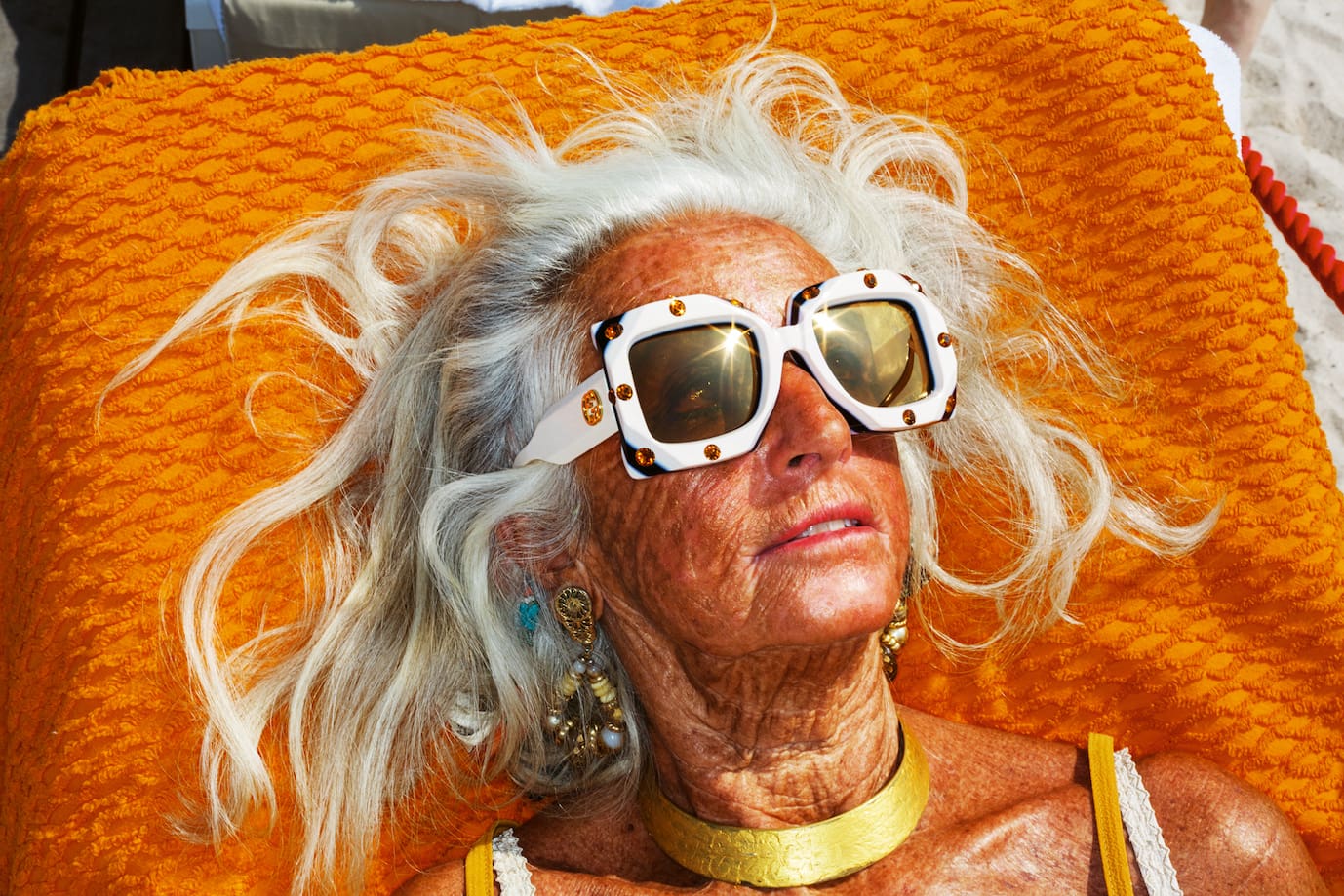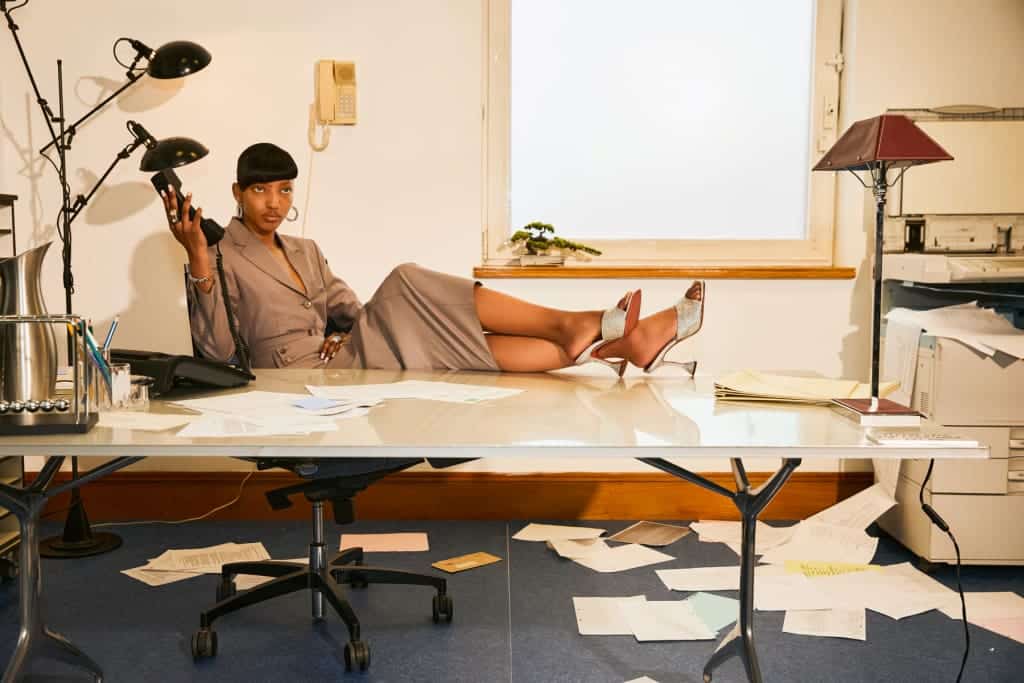
A documentary photographer is nearly always accidentally a clothes photographer. Unless the subject of study has good reason to be naked (sex, protests, intimate family life, nudist communities and so on), there will be garments in the frame: garments that have as much to say as the photograph’s setting or the poses, expressions and silent social dynamics held within. In Martin Parr’s early, career-defining work Last Resort, capturing Liverpool beach destination New Brighton between 1983 and 1985, clothes situate time and place—old ladies in padded-shouldered frocks, beauty queens with big hair and tight swimsuits, kids and parents alike in white ankle socks—and clamour for attention. They betray clues and make suggestions, drawing the eye towards half-done zips and ice-cream splattered shoes.
Inspired by a new generation of American photographers including William Eggleston, Parr shot his series in colour, ensuring that every striped red jumper and pale blue romper against a similarly hued sky levied maximum visual impact. The series was controversial in its depiction of working class leisure time in the Thatcher era, stirring prickly questions about Parr’s intentions. Was this a curious eye choosing to look where others would rather avert their gaze, claiming neither beauty nor vulgarity in its observations of rubbish-strewn streets and wailing babies, or something crueller, something that turned life into garish theatre? Public opinion now errs towards the former, though Parr still declares that “all photography involving people has an element of exploitation,” with his own visual process akin to “a soap opera where I am waiting for the right cast to fall into place.”

A documentary photographer is not always a fashion photographer. A version of this fact opens Parr’s newest publication Fashion Faux Parr (Phaidon), detailing his formal editorial and advertorial work in recent decades: campaigns for Gucci interspersed with magazine shoots for Madame Figaro, Numéro, and various global editions of Vogue. Unlike the documentary photographer, who claims to observe life as it is, the fashion photographer is God of their own manufactured world. Within this world the people have been chosen on the basis of their ‘look’, beautiful or otherwise; the clothes gathered from brands before being steamed, sorted and styled; the setting chosen for the story or mood it will summon. The soap opera can be cast, costumed, and staged exactly as desired.
Fashion photography trades in many different aesthetics, from fairytale whimsy (stately homes, big gowns, swans) and minimalist restraint (the classic Irving Penn-style white backdrop) to the tongue-in-cheek clash between luxury and quotidian life. Parr sits most happily in the latter camp, drawing on his trademark techniques of bright camera flashes, saturated shades and humorous juxtapositions. Logo-clad models ride buses with perma-tanned tourists, Cara Delevingne plays in the arcades, and stilettos sit surrounded by surgical equipment. At its best, this work has a naughty charm. In one of the book’s essays, American Vogue’s contributing editor Tabitha Simmons recalls working with Parr on an accessories-themed shoot for the publication at Shepton Mallet Antique Fair in 2022: a teddy bear was bedecked with a diamond diadem while a little tarnished statue sported a Fendi Baguette bag. She praises Parr’s magpie eye and “fascination in the seemingly trivial”, a statement which could be as easily applied to the work for which he is renowned as for these fashionable forays.


At times, the images in Fashion Faux Parr raise more complex considerations of the boundaries between fantasy and normality. The model-surrounded-by-civilians is now a stock fashion photography trope, designer clothes and towering women parachuted into deliberately contrasting locales. Sometimes just the clothes are dropped in, passers-by (or well-cast approximations of passers-by) clutching designer handbags for the camera. Again, such compositions invite questions of the eye looking, finding, and creating its image. Is there something ultimately generous in this approach, with its suggestion that anyone can and should star in a fashion shoot? Or does that garish edge of humour, that contrast between thousand-pound dresses and cheap sandals or milky youth and wrinkled ageing, feel too stark, too close to a punchline?
Fashion Faux Parr also contains photos from Parr’s wider oeuvre. Here and there one finds a documentary image, chosen for the clothing on show, as well as fashion show reportage and several more straightforward portraits of designers and other industry figures. Occasionally the staged and the real are juxtaposed: a snap from a Russian debutante ball in 2016, all opulent, symbolically laden white, sits opposite a commission for Stiletto featuring a similar pose. In the lead up to the book’s publication, Parr curated a themed exhibition of photos from Magnum’s archives, where he has been a full member since 1994. Many of these images from other members of the photographic collective such as Bruce Gilden, Olivia Arthur and Ferdinando Scianna explore the application of a particular photographic vision to a commercial and editorial context. The results can be exciting and artistically fruitful (and lucrative, if a brand is paying for it), but, as with Parr, often the most exhilarating work is that which captures clothes without necessarily selling them, alighting on the story that’s already there rather than needing to construct one anew.
Fashion Faux Parr by Martin Parr is published by Phaidon. Featured image: Cannes, France, 2018. Commissioned by Gucci. Picture credit: © Martin Parr





